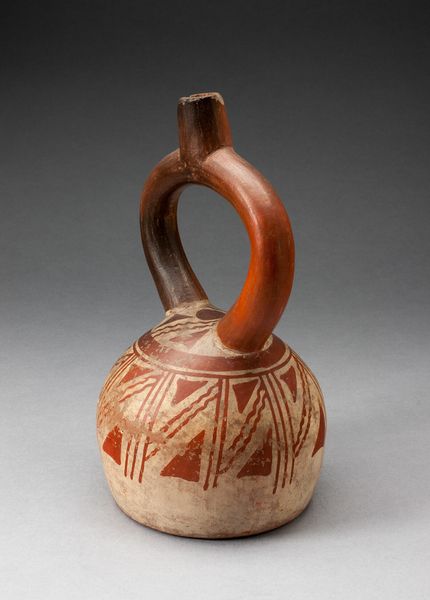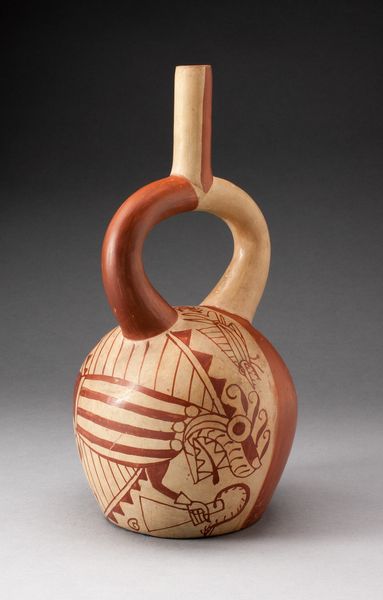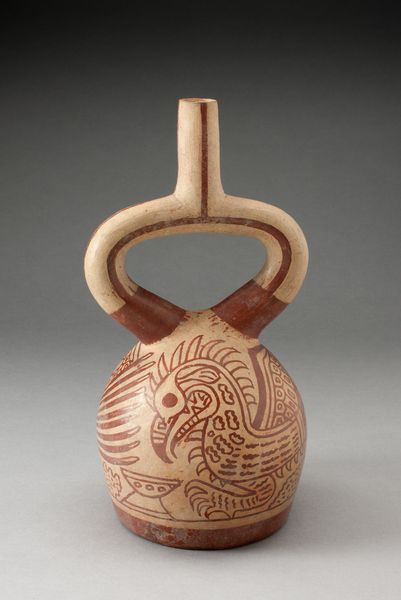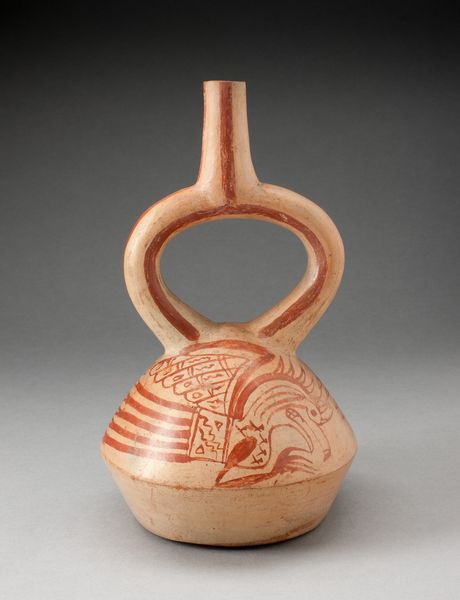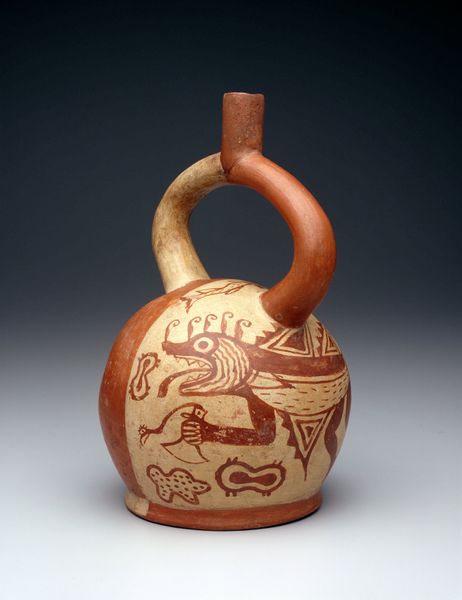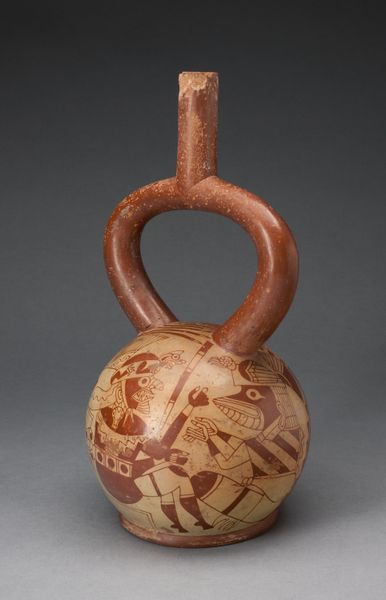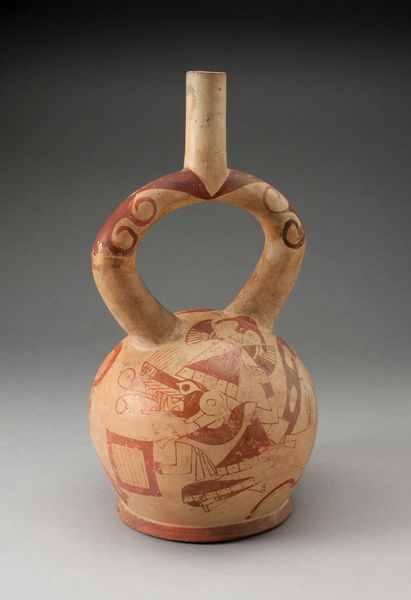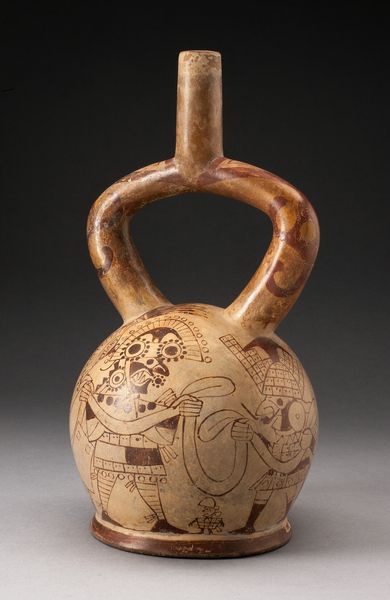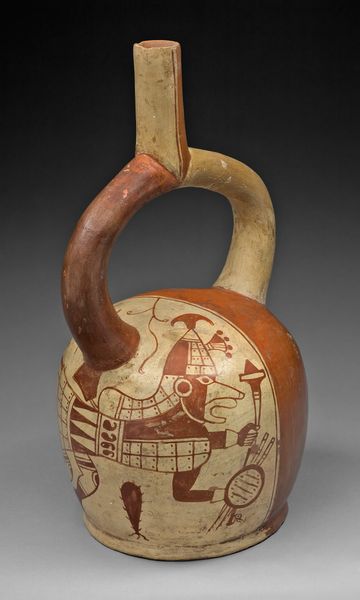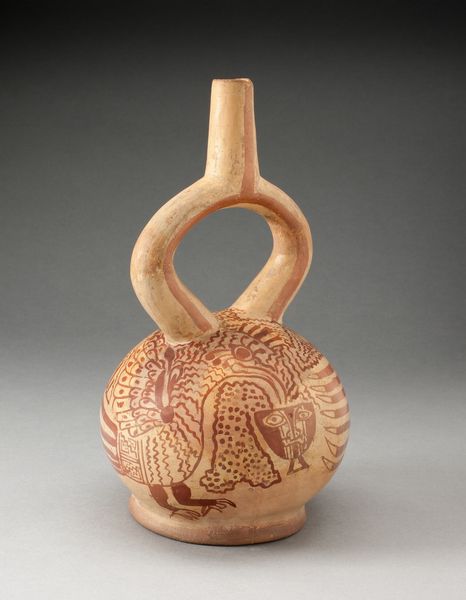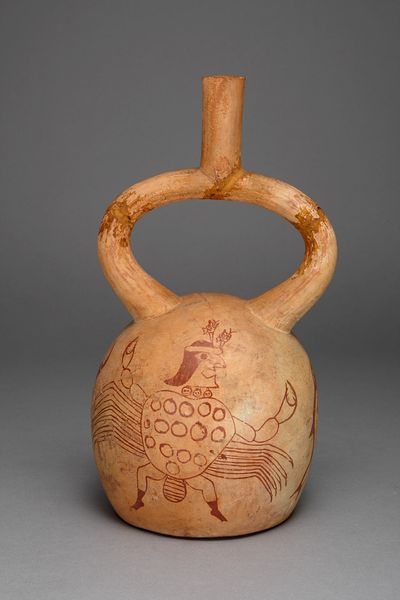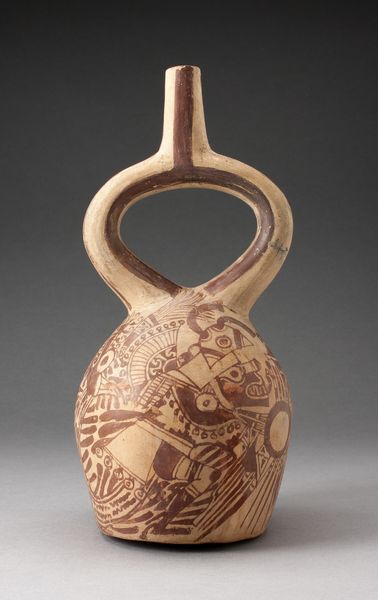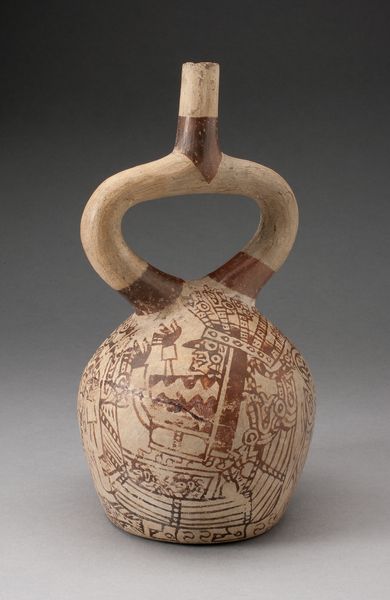
Stirrup Vessel Depicting an Anthropomorphic Composite Being, with Overpainting c. 100 - 500
0:00
0:00
ceramic, terracotta
#
ceramic
#
figuration
#
ceramic
#
terracotta
#
indigenous-americas
Dimensions: 29.2 × 15.6 cm (11 1/2 × 6 1/8 in.)
Copyright: Public Domain
Curator: This striking ceramic vessel, dating from around 100 to 500 AD, comes from the Moche culture. The Art Institute of Chicago titles it, "Stirrup Vessel Depicting an Anthropomorphic Composite Being, with Overpainting." Editor: My first impression is that of controlled chaos. The combination of the vessel's curves and that aggressively graphic design—the strong reds, stylized depictions, and overpainting you mentioned—creates a powerful presence. Curator: It's the composite nature of the figure that interests me most. What does this merging of human and animal forms signify in terms of labor and the raw materials readily available? The red pigment, likely ochre, suggests a direct connection to the earth. Editor: From a formal perspective, the dynamic composition and that repeated crescent shape work in striking contrast to the solid form of the vessel. Those elements create a sense of movement that animates the entire piece. It's not static; it feels alive. Curator: Precisely. We must also remember the social context of this piece. Such vessels were likely produced by specialized artisans, potentially for elite members of Moche society or ritual use, demonstrating labor stratification. The fact that these objects are not uniform tells a lot about this stratified society, even indicating the artisan's distinct point of view. Editor: Interesting, though my eye keeps returning to the formal repetition: circles, triangles, sets of curved lines. These elements work harmoniously with the object's rounded shape, intensifying its visual allure. Even if we lack all historical knowledge of the piece, there is great pleasure just appreciating those lines in this artwork. Curator: I concede that it is visually striking, but what resonates is its testament to human labor. Its creation mirrors a dynamic process of resource extraction, knowledge exchange, and the transformation of raw material into symbolic expression and is a concrete product of labor. Editor: Absolutely. And thinking about it materially, it's remarkable to observe how basic shapes can yield such an enthralling representation that has transcended through centuries, retaining their visual effect in modern audiences.
Comments
No comments
Be the first to comment and join the conversation on the ultimate creative platform.
